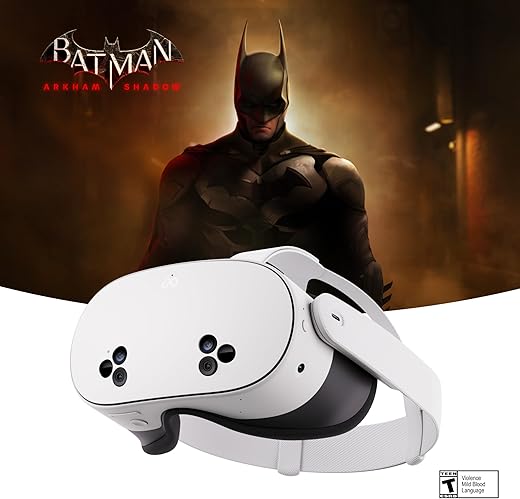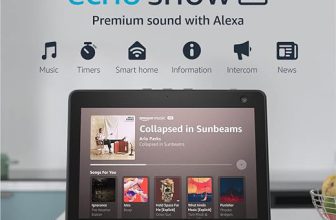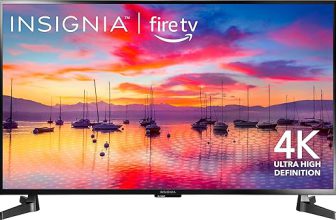
As someone who’s been captivated by the world of virtual reality, I understand the excitement and curiosity that comes with exploring this innovative technology. However, I also recognize that the question of cost can be a significant barrier for many potential users. With a wide range of options available, from budget-friendly models to high-end devices, it can be overwhelming to determine what fits not only your needs but also your budget. In this blog post, I’ll break down the typical costs associated with VR headsets, examining the features and factors that influence pricing. My goal is to help you navigate this landscape and empower you to make an informed decision on your VR journey.



Understanding the Price Range of VR Headsets
Virtual Reality (VR) headsets come in a wide range of prices, each tier offering unique features and capabilities. This section will break down the pricing landscape into three main categories: budget, mid-range, and high-end options. By examining popular models in each category, readers can better understand how price correlates with essential specifications, including resolution, field of view, tracking technology, and included accessories.



Budget VR Headsets
Budget VR headsets are ideal for newcomers to the VR experience or those looking for a more casual use. These devices typically range from $100 to $300 and offer basic features suitable for mobile gaming and media consumption.
Examples:
- Oculus Quest 2
- Price: Starting at $299
- Resolution: 1832 x 1920 per eye
- Field of View: Approximately 90 degrees
- Tracking Technology: Inside-out tracking with 6 degrees of freedom (6DoF)
- Target Audience: Casual gamers and first-time VR users
- Key Features: Standalone device; no need for a high-end PC; access to a vast library of games and apps.
- Samsung Gear VR
- Price: Approximately $129
- Resolution: Dependent on the smartphone used
- Field of View: Varies based on the phone
- Tracking Technology: 3DoF (3 degrees of freedom)
- Target Audience: Smartphone users wanting to explore VR
- Key Features: Utilizes a compatible Samsung smartphone, lightweight design, and entry-level VR experience.
Mid-Range VR Headsets
Mid-range VR headsets, priced between $300 and $600, strike a balance between performance and affordability. These headsets often include enhanced features suitable for more serious gamers or users seeking a more immersive experience.
Examples:
- Valve Index
- Price: Starting at $499 (full kit)
- Resolution: 1440 x 1600 per eye
- Field of View: Approximately 130 degrees
- Tracking Technology: External base stations for precise tracking
- Target Audience: Enthusiasts and serious gamers
- Key Features: High refresh rate (up to 144Hz), excellent build quality, and finger-tracking controllers for a more immersive experience.
- HP Reverb G2
- Price: Approximately $599
- Resolution: 2160 x 2160 per eye
- Field of View: Approximately 114 degrees
- Tracking Technology: Inside-out tracking
- Target Audience: Flight sim enthusiasts and professionals
- Key Features: High-resolution displays for detailed visuals, great audio quality, and compatibility with Windows Mixed Reality and SteamVR.
High-End VR Headsets
High-end VR headsets, typically priced above $600, offer the utmost in performance and features. These options are designed for users who demand the best experience, whether for gaming, professional simulations, or development purposes.
Examples:
- HTC Vive Pro 2
- Price: Starting at $799 (headset only)
- Resolution: 2448 x 2448 per eye
- Field of View: Approximately 120 degrees
- Tracking Technology: External base stations
- Target Audience: Professionals and dedicated gamers
- Key Features: Stunning graphics, high-quality audio, and extensive tracking capabilities for a truly immersive experience.
- Pimax 8K X
- Price: Approximately $1,299
- Resolution: 3840 x 2160 per eye
- Field of View: Up to 200 degrees
- Tracking Technology: External base stations (compatible with SteamVR)
- Target Audience: VR enthusiasts and developers
- Key Features: Extremely high resolution and wide field of view for unparalleled immersion, customizable options for comfort and performance.
Price Correlation with Features
The price of a VR headset often correlates with a variety of technical features and specifications. Here are some key aspects to consider when evaluating headsets across different price ranges:
| Feature | Budget Headsets | Mid-Range Headsets | High-End Headsets |
|---|---|---|---|
| Resolution | Lower resolutions (up to 1832 x 1920) | Moderate resolutions (up to 2160 x 2160) | Highest resolutions (up to 3840 x 2160) |
| Field of View | Limited (up to 90 degrees) | Moderate (up to 130 degrees) | Wide (up to 200 degrees) |
| Tracking Technology | Basic (3DoF or 6DoF) | Enhanced (6DoF with base stations) | Advanced (6DoF with base stations) |
| Audio Quality | Basic audio solutions | Moderate quality | High-fidelity audio |
| Included Accessories | Minimal or none | Additional controllers | Comprehensive bundles |
As users navigate the VR headset market, understanding these tiers and their associated features will help them make informed decisions based on their budget and intended use. Whether a user is seeking a casual experience or a fully immersive environment, there is a VR headset available to meet their needs.
Factors Influencing VR Headset Prices
The pricing of VR headsets is shaped by a multitude of factors that reflect both the current state of technology and consumer demand. Understanding these factors can help consumers make informed choices when selecting a headset that fits their needs and budget.



Technological Advancements
One of the most significant influences on VR headset prices is the pace of technological advancements. As new technologies emerge, they are often integrated into the latest models, which can lead to price fluctuations. Key technological elements include:
- Display Quality: Higher resolution displays, such as the Meta Quest Pro’s 1800 x 1920 pixels per eye, significantly enhance the immersive experience but also contribute to higher costs.
- Field of View (FOV): A wider FOV can offer a more immersive experience. Models like the Pimax 8K X, which boasts a FOV of up to 200 degrees, come with a higher price tag due to this feature.
- Refresh Rate: Higher refresh rates provide smoother visuals and reduce motion sickness. The Valve Index, for example, offers a 144 Hz refresh rate, contributing to its premium pricing.
Brand Reputation
Brand reputation plays a critical role in the pricing of VR headsets. Established brands often command higher prices due to consumer trust and perceived quality. For instance:
- HTC Vive: The HTC Vive Pro is known for its high-quality build and extensive ecosystem, leading to a premium price point of around $799. In contrast, lesser-known brands may offer similar features at a lower price, but may not have the same level of consumer trust.
- Meta (formerly Oculus): The Meta Quest series, particularly the Meta Quest 2, has gained popularity for its value, priced around $299. The brand’s reputation for quality and support enhances its appeal.
Additional Features
Features such as wireless capabilities and compatibility with gaming consoles can significantly impact pricing. Here are a few examples:
- Wireless Capabilities: Headsets that offer wireless play, such as the Meta Quest 2, often carry a higher price due to the added convenience and technology required to support untethered gameplay.
- Console Compatibility: Models like the PlayStation VR are specifically designed to work seamlessly with PlayStation consoles, which can drive up costs due to the integration of additional technology needed for compatibility.
Impact of Market Trends
Market trends, including consumer preferences and the overall demand for VR technology, can also influence pricing:
- Increasing Demand: As more consumers become interested in virtual reality, demand for certain models can drive prices up. For example, during holiday seasons, the prices of popular models like the Meta Quest 2 may temporarily increase due to heightened demand.
- Sales and Discounts: Retail events such as Black Friday often lead to significant discounts on VR headsets. The Oculus Rift S, typically priced around $399, can see price drops to $299 during sales, reflecting how market trends can create opportunities for consumers.
Emerging Competitors and Innovations
The VR market is becoming increasingly competitive, with new entrants and innovations constantly reshaping the landscape. This competition can lead to price adjustments as companies strive to attract consumers:
- New Entrants: Brands like Pico Interactive are entering the market with competitive pricing and features. The Pico 4, priced at approximately $499, offers similar specifications to established competitors, prompting them to adjust their prices.
- Innovative Technologies: Innovations like eye-tracking and haptic feedback are starting to appear in mainstream models. As these features become standard, prices may fluctuate based on the cost of integrating such technology.
Key Takeaways
In summary, several key factors influence the pricing of VR headsets:
- Technological advancements enhance user experience but often come at a premium.
- Brand reputation can significantly affect consumer trust and willingness to pay.
- Additional features like wireless capabilities and console compatibility can justify higher price points.
- Market trends based on demand and seasonal promotions can lead to temporary price fluctuations.
- Emerging competitors and innovations may reshape the market, influencing the pricing strategies of established brands.
By understanding these factors, consumers can better navigate the VR headset market to find a product that fits their needs and budget.
Summary of Pricing Trends and Considerations
In conclusion, the cost of virtual reality headsets varies widely, and it’s important for potential buyers to recognize the factors that contribute to these price differences. By evaluating the various price tiers, understanding the significance of specific features, and employing effective shopping strategies, I can make a well-informed decision that aligns with my preferences and budget. Ultimately, investing in a VR headset can significantly enrich my digital experiences, making it a decision worth contemplating.







The battery life on my VR headset can be a pain. I wish manufacturers would focus more on improving that aspect. Anyone else find this to be an issue?
Yes, battery life can be a bummer! It’s definitely something that needs improvement, especially for long gaming sessions. Hopefully, future models will address this more.
I recently bought an Oculus Quest 2 and I can say it was totally worth the investment! The price was pretty reasonable for the quality you get. Anyone else feel the same?
I actually use my VR headset for fitness games like Beat Saber and it’s been fantastic! It really adds a fun twist to working out. Anyone else use VR for fitness?
That’s awesome! VR for fitness is definitely gaining traction. It’s a great way to stay active and have fun at the same time. Keep it up!
Just a heads up, I had a rough time setting up my VR headset at first. Make sure to read all the instructions because the initial setup can be a bit tricky. Anyone else experience this?
Totally get you! The setup can be a bit daunting, especially with room-scale tracking. It’s a good idea to watch some setup tutorials on YouTube for visual guidance.
Can anyone recommend a good VR headset for under $300? I’m trying to find something budget-friendly for gaming but don’t want to compromise too much on quality.
If you’re looking for something under $300, the Oculus Quest 2 is often on sale and provides a solid experience. You might also want to check out the HTC Vive Focus for similar price points.
I’d love to see an article about the best VR games to pair with different headsets. It would help a lot for newcomers who are trying to figure out what to buy!
Great idea! There’s such a wide range of experiences available depending on the headset. I’ll definitely consider this for a future article!
Absolutely! The Quest 2 has been a game changer for many. It offers great value for a standalone headset without needing a PC. Glad you’re enjoying it!
I think the price range can be misleading. Some cheaper headsets might have poor performance compared to mid-range ones. What’s everyone’s take on that?
That’s a fair point! Entry-level headsets can often lack features that enhance the VR experience, like resolution or tracking accuracy. It’s all about what you prioritize.